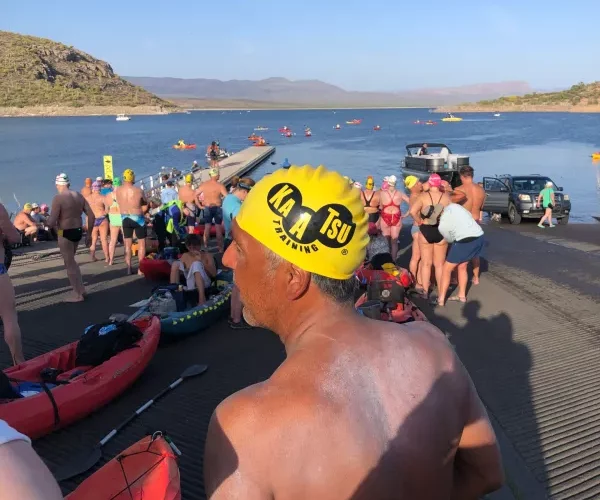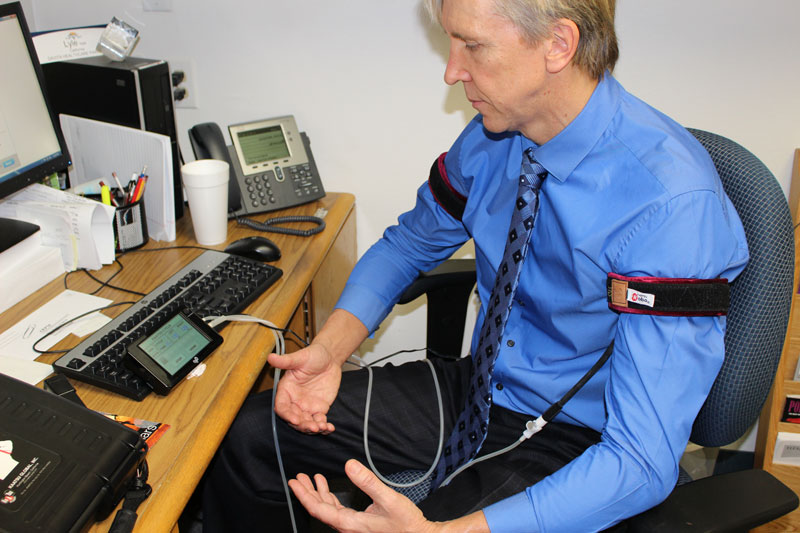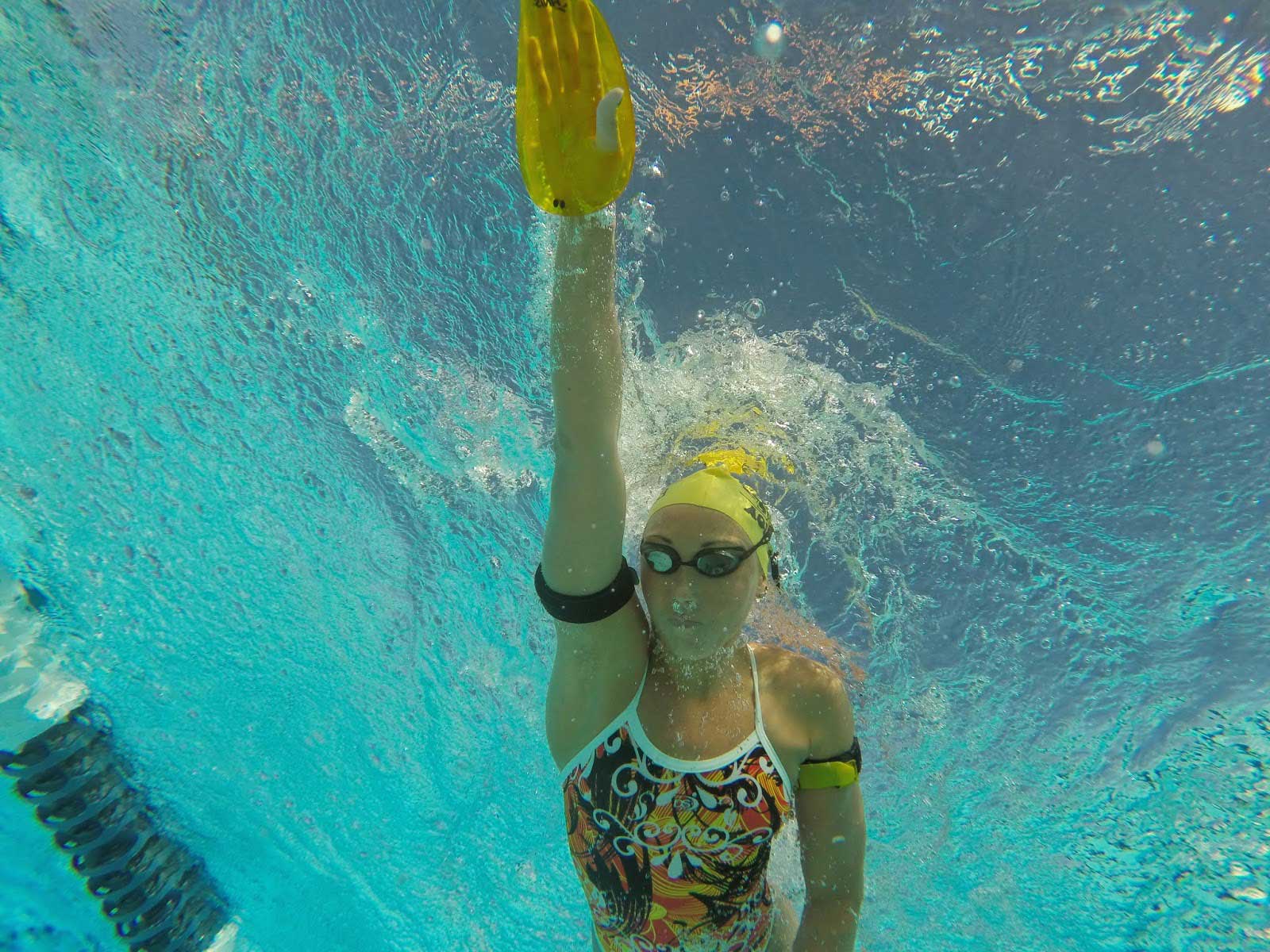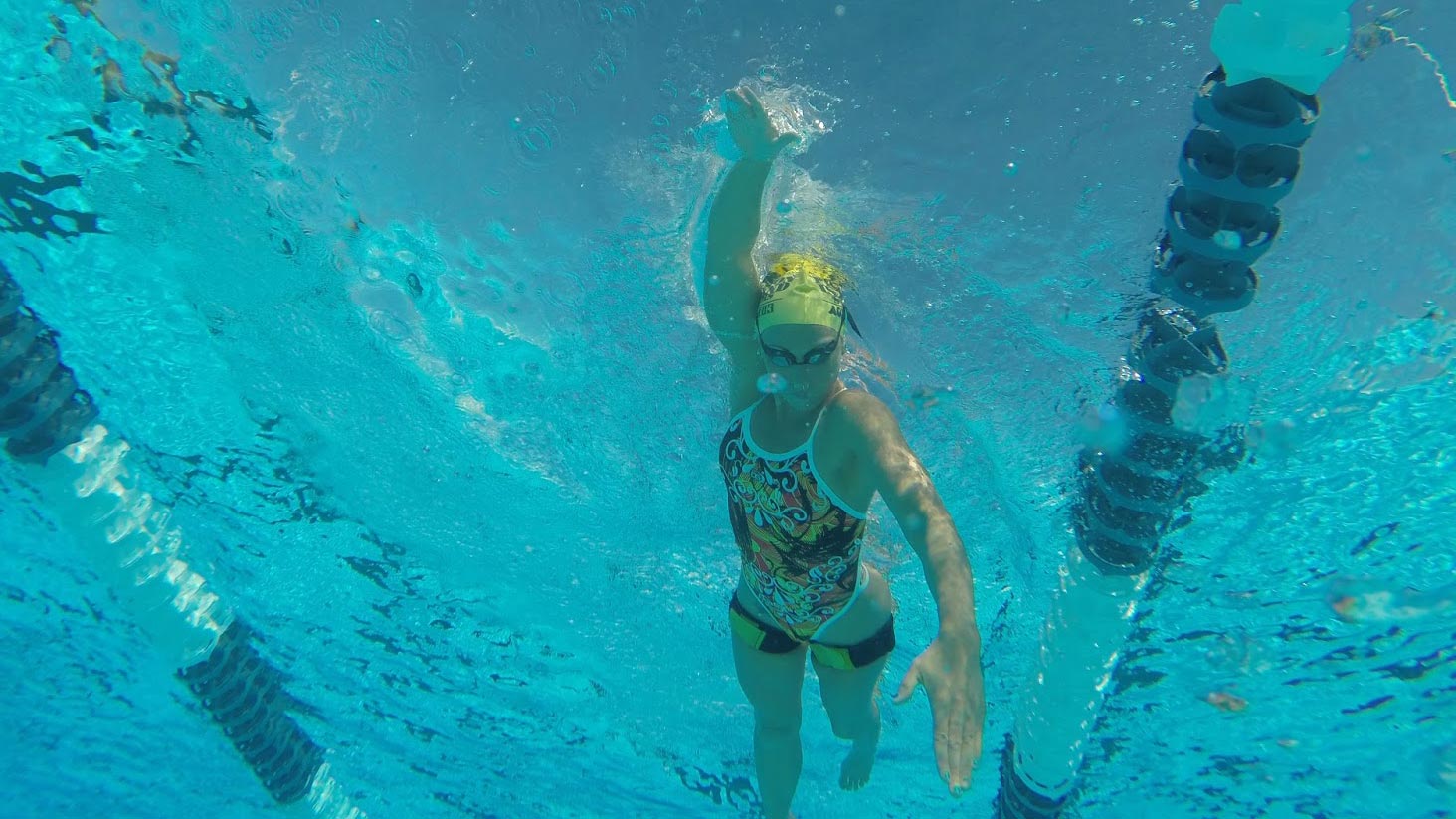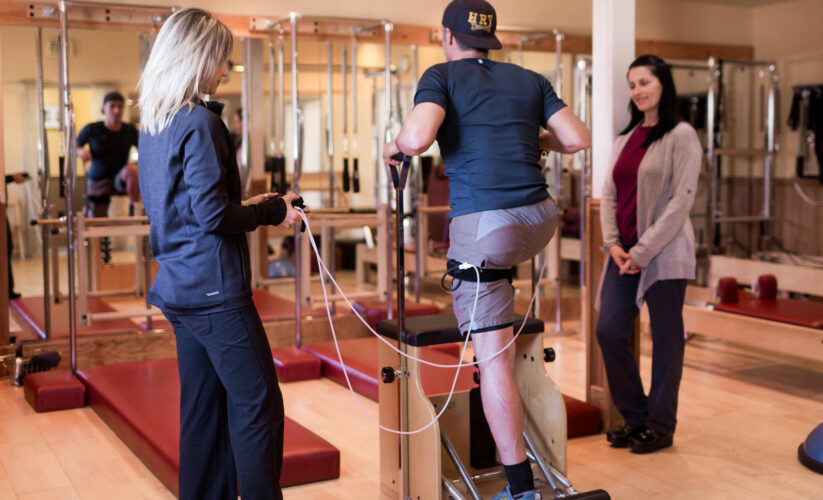
KAATSU Specialist Series: How Much Pressure Should You Use?
Many newcomers of KAATSU equipment wonder what is their Optimal Pressure. There is not a straightforward answer. The most accurate decision of your Optimal Pressure is based on the following factors:
- Your activity: is it more aerobic or anaerobic?
- Your intensity of movement: is it more casual or vigorous?
- Your duration of movement: do you do shorter 1-2 minute bouts of movement or longer 20 minutes of non-stop movement?
- Your chronological age: what is appropriate for active 20-year-olds is unsustainable or unachievable by 70-year-olds.
- Your overall conditioning, a combination of cardio-vascular endurance (VO2 max) and vascular elasticity.
- Your goals: are you looking to improve muscular strength, muscle mass, speed, stamina, degree of mobility or weight?
- Your altitude: do you do KAATSU at sea level or above 1000 meters (3280 feet)?
Optimal Pressure
First of all, what is Optimal Pressure?
Your Optimal Pressure can be visually found by doing a simple test on the palm of your hand.
Firmly push your thumb in the meaty part of the palm of your hand. The area where you push with your thumb will temporarily turn white because the blood is pushed out of the surface capillaries. Then, the blanched area will fill up with blood and return to its normal color. This amount of time is called CPR or Capillary Refill Time.
The Optimal Pressure is when the pressure of the KAATSU Air Bands leads to the CPR on the palm of your hand being the fastest. When you increase the SKU pressure, this duration generally get shorter and shorter. However, if you increase the SKU pressure too much and the duration gets slower (i.e., longer), then your pressure is suboptimal.
For some people, the Optimal Pressure will be 150 SKU; for others, it will be 350 SKU.
Even for the same person, the Optimal Pressure can change day to day, or differ based on being poorly hydrated or well hydrated, or differ based on the type of exercise that you are doing (e.g., stretching versus jogging).
In general, the faster CPR the better whereas the fastest CPR indicates your Optimal Pressure. A slower CPR generally indicates a SKU pressure that is too high, especially if the CPR is slower than 3 seconds.
For example, your Optimal Pressure is significantly lower if you do aerobic exercise (e.g., running, jogging, burpees, swimming, rowing, cycling) compared to anaerobic exercise (e.g., weight training, resistance training, sprinting short distances or jumping).
Similarly, if you do non-stop KAATSU Training, your Optimal Pressure is significantly lower compared to doing repeated KAATSU Cycles. Similarly, if you are at high altitude, your Optimal Pressure should be lower than at sea level.
Almost without exception, the more that you do KAATSU, the greater your Optimal Pressure will become.
That being said, these are the fundamental principles that do not change with any pressure level or any form of movement:
- be well hydrated before and during KAATSU
- always have the KAATSU Color in your limbs (i.e., your KAATSU Color will be pinker, redder or possibly even purplish compared to your normal non-KAATSU skin color)
- if you feel lightheaded, immediately remove the bands. Lightheadedness is the first indication that the bands have been on too long, have been placed at a pressure that is too high, or that your movement is too intense for the given pressure, or you are doing KAATSU at high altitude (the KAATSU differential basically begins at 1000-1500 feet depending on the individual).
In principle, if you wish to gain muscular strength or size most efficiently, do movements every slowly (both in the positive and negative directions) and contract your muscles throughout the movement. You can do 2-4 KAATSU Cycles with any given exercise and then finish off with 5-10 minutes of KAATSU Training at your Optimal Pressure.
The 30-20-10 rep count is simply a rough guide. In reality, you know you are close to your Optimal Pressure if the number of repetitions that you do in each subsequent set decreases. For example, you can do 30-60 reps in set #1, 15-20 repetitions in set #2, 5-10 repetitions in set #3, and if you really want to build muscular strength or size, do a fourth set burning out only 1-2 repetitions.
Your Optimal Pressure can be visually found best when your CPR (Capillary Refill Time) on the palm of your hand is the fastest. That is, press your thumb into your palm. Your skin should turn temporarily white as the blood is pushed out of the surface capillaries. Then, see how fast the blood (and color) returns to the blanched area. When you increase the pressure, this duration should get shorter and shorter. If you increase the pressure and the duration gets slower (i.e., longer), then your Optimal Pressure is lower.
That is, faster is better and the fastest indicates your Optimal Pressure. Slower is either too light or too much.
Like porridge, it should be JUST RIGHT.
Attached is a KAATSU Magazine on KAATSU Aqua exercises for your reference.
Steven Munatones, CEO & Co-founder
KAATSU Global, Inc.
http://www.kaatsu-global.com
http://www.kaatsublog.com
From: L E <laevtt@gmail.com>
Sent: Thursday, February 6, 2020 6:06 AM
To: Steven Munatones
Subject: Re: KAATSU return and refund
Thanks very much for this information. I’ve been doing advanced 3-point on legs and arms with warm-up cycles before doing them. Do you recommend cycling or using the training mode for exercise sessions (3 exercises with 3 sets each at 30-20-10 reps)?
I still have not found a good explanation of how to find your optimal pressure. The instruction material says repeatedly to be sure to ascertain your base and optimal SKU before beginning exercises, but there is no explanation on how to do this. If you could explain this, it’d be most helpful.
Finally, I go to the pool at least 3 times per week and would like to know what you recommend for use in the pool.
Thanks again for your help and time!
-Linda
On Fri, Jan 31, 2020 at 1:19 PM Steven Munatones <steven.munatones@kaatsu-global.com> wrote:
We do not sleep much. We are a 3-person company that distributes KAATSU products in 47 countries. We try to do our best.
In answer to your questions, the first thing that we must address is that KAATSU is like no other exercise and training regimen in the world.
You can do KAATSU anywhere at anytime doing anything. This is a very radical concept. In my case, I write a lot of emails so I have my KAATSU Cycle 2.0 right by my laptop and I do repeated KAATSU Cycles at least twice per day. I do not lift weight or do anything that my peers do. But I can do 15 standard pull-ups as a 57-year-old. Repeated KAATSU Cycles helps keep me fit enough to at least match my 21-year-old son in pull-ups.
If you are losing more body tone in your lower body, I recommend that you focus on your legs and place the KAATSU Air Bands on your upper legs and simply walk. It seems like such an easy thing to do that will be result in many benefits, but it will. We did many tests with fit young men in the Air Force and they improved their stamina and aerobic capacity simply doing KAATSU Walking: http://www.kaatsublog.com/2019/03/moving-slowly-to-ultimately-move-faster.html
If you want to do more, I suggest that you do the Advanced KAATSU 3-Point Leg Exercises: http://www.kaatsublog.com/2019/11/11-using-kaatsu-cycle-20-advanced.html. That is, do repeated sets of Standing Heel Raises, Standing Leg Curls, Quarter Squats and Balancing Exercises while you are using the KAATSU Cycle 2.0 unit.
I occasionally use KAATSU equipment in the pool. This is precisely why the material is neoprene. But I recommend doing KAATSU Walking and Advanced KAATSU 3-Point Leg Exercises for 2-4 week and see how that type of training goes. Later, I can explain KAATSU Aqua exercises – that my 83-year-old mother does daily in her local 25-yard community pool.
Good luck.
Steven Munatones, CEO & Co-founder
KAATSU Global, Inc.
http://www.kaatsu-global.com
http://www.kaatsublog.com
From: L E <laevtt@gmail.com>
Sent: Friday, January 31, 2020 7:21 AM
To: Steven Munatones
Subject: Re: KAATSU return and refund
Thanks for your emails and time with this. I don’t know how you’re able to spend so much time with customers – impressive.
When deciding to purchase a system I was a little torn between KAATSU and the B Strong BFR Training System. B Strong offers an app with exercise programs as well as recommended pressure setting dependent upon your age and fitness level. That was attractive to me as I could get going immediately without much research, etc.
The Cycle mode and your depth of experience won me over to KAATSU and now that you are willing to help me out with a few questions, I feel much better about my decision and am now ready to learn as much as I can and make real progress with the KAATSU system.
To answer your questions:
A1- I just turned 60
A2- Weight training at home with dumbbells (video workouts) PLUS Swimming (laps and exercises). I have access to a wonderful pool at a local private school and am interested in learning more about using the system while swimming. I understand the the bands can be used in the pool, but am a little worried about the effects the chlorine might have on them and am a little unsure of the best use while swimming or doing water exercises.
A3- Muscle tone loss seem about equal, but more noticeable in lower body in day to day activities
I look forward to reading through all of the issues of your magazine as well as the training program you sent. Thank you.
-Linda
On Thu, Jan 30, 2020 at 7:33 PM Steven Munatones <steven.munatones@kaatsu-global.com> wrote:
Linda,
I have a few more questions:
Q1. How old are you?
Q2. What was your exercise regimen (to date)? Weight training, jogging, yoga, swimming?
Q3. Have you lost muscle tone equally in your upper and lower body?
In answer to your questions:
A1. In order to find your Optimal Pressure in the Training mode, I need to know what type of exercise are you doing in the Training mode? Jogging, burpees, push-ups, sit-ups, walking, rehabilitation exercises? When the body is in the horizontal position and when it is in the vertical position, the Optimal Pressure can change.
A2. You can increase the levels in the KAATSU Cycle mode as you see fit. In other words, if you feel comfortable with a certain level, then I would recommend to stay there. If you want to push yourself to a higher (more vigorous or more intense) level, then increase the level.
The reason why we cannot give a precise program for everyone is because the Optimal Pressure in the Training mode and the Cycle mode are largely dependent on your vascular elasticity – which can change slightly day-to-day, even if you are under-hydrated and well-hydrated, your body will react differently.
Therefore, it is most important to listen to your body and look at the coloration of your skin. Your skin should always remain a darker (i.e., pink, rosy red, red) color with KAATSU Air Band on compared to your natural skin color without KAATSU Air Bands on. When you push your thumb into your palm, your skin should go temporarily white and then return to its color within seconds (1-3 seconds). The faster your skin returns to color, the better. This means that your capillaries are engorged with blood.
Therefore, if you feel comfortable and your skin remains a darker color compared to its natural skin tone, then you can keep increasing the levels from the G levels (Low + Medium + High) to the P levels (Low + Medium + High). We have some NFL and NBA players and Navy SEALs who never go above G Medium – and we have some 80-90 year olds, who go from G Low to P High without a problem. This is why I cannot give you a precise regimen; you must listen and look at your own body.
A3. Yes, you test your capillary refill time after you have the band on and the KAATSU Cycle 2.0 is on. You want to see how your body reacts when the added pressure is on.
A4. You will receive the KAATSU Magazines and other materials via WeTransfer due to the large file size in a few minutes.
Steven Munatones, CEO & Co-founder
KAATSU Global, Inc.
http://www.kaatsu-global.com
http://www.kaatsublog.com
From: L E <laevtt@gmail.com>
Sent: Wednesday, January 29, 2020 11:23 AM
To: Steven Munatones
Subject: Fwd: KAATSU return and refund
Hi Steve,
I reread your email where you said that you could describe specific programs for me to reach my goals. I was wondering if you might be able to do so in addition to the questions earlier.
I’m an active female boomer. The past 6 months I have become complacent with my exercise regimen and feel that I’ve lost a lot of muscle tone. I would like to regain strength and build additional muscle.
Thanks again for your help,
Linda
———- Forwarded message ———
From: L E <laevtt@gmail.com>
Date: Wed, Jan 29, 2020 at 1:40 PM
Subject: Re: KAATSU return and refund
To: Steven Munatones <steven.munatones@kaatsu-global.com>
Thanks very much for getting back to me so quickly. As I said, it has been frustrating to wade through so much ancillary information to find what applies to those just starting training on their own. After finding some parts that are pertinent to one just beginning to use KAATSU to build strength, I still have some questions.
The main concern of mine is how to find your Optimal Pressure in Training mode.
Also, how do you know when to increase your level in Cycle mode? It says to start with G-Low and work your way up. But, I don’t see any information on timing of this “working your way up” or how far you should go.
Also, your video and info on base pressure is a bit confusing. I’m assuming you test your capillary refill time upon placing the bands (without added pressure) to find your base?
If you could give me access to all of your back issues of your magazine, I think that would be helpful. I have found the link to your blog, but see no information about your Podcast. Some info on that would be helpful as well.
Thanks again,
Linda
On Wed, Jan 29, 2020 at 12:35 PM Steven Munatones <steven.munatones@kaatsu-global.com> wrote:
Linda,
Thank you very much for your comments and requests.
Because we have a wide variety of users – from children to people as old as 99 years old, from high school students to Olympic and professional athletes, from paraplegics and bedridden patients to morbidly obese and otherwise sedentary individuals in 47 countries – we prefer to listen to the specific needs of our users and then provide them with information / exercises / training or rehabilitation recommendations specific to their needs.
We provide a monthly magazine (see attached examples), a blog and a podcast that collectively cover a wide variety of applications and programs. If you would like to receive all the back issues for your reference, please feel free to ask.
As you state, we do have a wide variety of information but that is because our users have ranged from 4 to 104 years old and come from all walks of life. I accept this criticism and am constantly working to streamline our information as best I can. A small sampling of our information is here.
If you wish, I can describe specific programs that may be beneficial to you and help you reach your goals. You can email me back or call me at +1-714-305-7374.
From: Linda Everett <laevtt@gmail.com>
Subject: KAATSU-Global.com Contact Form: KAATSU recent purchase
Date: January 29, 2020 at 6:48:04 AM PST
To: info@kaatsu-global.com
Hello. I’m very disappointed with the documentation that accompanied my purchase of the KAATSU Cycle 2.0. There was a very brief Quick User Guide in the package and your website refers me to the “KAATSU Cycle 2.0 Magazine”.
This document is not adequate for a user guide as it is all over the place with varying amounts of detail regarding usage.
I would like to know what the procedure is to return the product and get a refund for my purchase.
Thank you.


